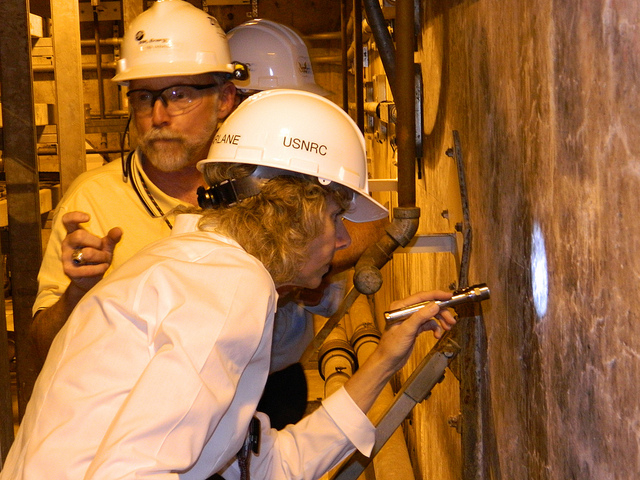The concrete in buildings at the Seabrook nuclear plant is being attacked by a chemical reaction that causes the concrete to swell and crack. If the condition is severe enough, it can weaken the concrete enough to cause structural problems. This condition, called alkali silica reaction (ASR), has been discovered at 131 locations in multiple structures at Seabrook.
It is important for the NRC to understand this issue thoroughly, since Seabrook’s owner NextEra has filed for a license renewal that would allow the reactor to operate until 2050, and chemical studies show the ASR will continue into the future. Since Seabrook is the first U.S. nuclear plant where ASR has been found, the NRC is in uncharted territory—it doesn’t have regulations that apply to this situation and the NRC staff does not have the detailed technical expertise that it has in other areas.
Because of our interest in nuclear power safety, last year we hired an independent concrete expert—Prof. Paul Brown of Penn State University—to help us identify the key issues, review NRC and NextEra documents, and comment on them. Last year, we released a set of comments by Prof. Brown and a summary of the issues and outstanding questions (the latter, jointly with the organization C-10).
In November, we sent a letter to the NRC commissioners providing new commentary by Prof. Brown on an NRC inspection report from August 2013. We also released with C-10 a background paper that describes some of the questions that we continue to have about the tests and inspections being conducted on the Seabrook concrete. The NRC inspectors responded to those documents with a letter in early December.
Last evening there was a public meeting near Seabrook about the concrete issues, which we were invited to address. My statement to the meeting is here.
Testing Concrete at Seabrook
One of the key issues highlighted at that meeting is the fact that the Seabrook plant has a set of buildings that were intended for a second reactor that was never built. Since these were built at the same time, by the same workers, and with the same concrete as the structures of the operating reactor, they could be used for extensive testing and monitoring to better understand the extent and implications of the concrete degradation at the site.
NextEra has instead hired a group at the University of Texas to conduct “replica tests,” which means trying to replicate the chemistry of the concrete used at Seabrook, subject it to ASR, and measure its properties.
While that might be an interesting way to understand more about the effects of ASR generically, it’s not clear what the tests will tell you about the specific situation at Seabrook, which is what matters. It’s a little like trying to figure out how good the food at a particular restaurant will be by trying to make the recipes yourself—it will give you some general information but won’t tell you anything specific to the restaurant. There may have been details about the way the concrete at Seabrook was made, mixed, and poured that are important.
If the goal of the tests and inspections is to assess as accurately as possible the actual situation with the concrete in structures at Seabrook—and that should be the goal—it makes sense to do extensive testing of actual concrete in structures at Seabrook. It is serendipitous that such structures exist for testing—the NRC should require NextEra to use them.

